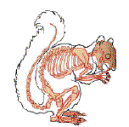 Mel Gibson in Payback (dir. Brian Helgeland, 1999/2006).
Mel Gibson in Payback (dir. Brian Helgeland, 1999/2006).I haven't seen the originally-released theatrical version of this. Apparently it has a completely different ending and contains Kris Kristofferson. I rented it because I found out it was an adaptation of Richard Stark's
The Hunter, the first in his series of "Parker" novels (Stark is a pseudonym for Donald Westlake).
The Hunter was previously filmed as
Point Blank in 1967.
Point Blank is by far the better film, though this isn't bad, and is in fact closer to the Stark spirit in general.
Stark's hard-boiled master thief Parker is here named Porter (Westlake doesn't let people use the Parker name unless they commit to doing a full Parker series, which they haven't--someone at HBO or somewhere should take it under serious consideration). He is played quite ably by Mel Gibson, who only breaks character mildly once or twice, mostly by adopting overly cute facial expressions. The idea in the books is that Parker is not a nice guy at all. He's completely unsentimental, he has no sense of humor, and he will kill anybody if he has to. The thing that allows the reader to "get behind" him as the center of narrative subjectivity without being completely repulsed is that he has a code of sorts. It's not an ethical code, exactly, but it is practical in the extreme, and it becomes a point of fascination how often that practicality coincides with non-sociopathic versions of ethics. Every once in a while he does something utterly unconscionable, and we find ourselves swept up in our identification with him, making ways to rationalize it--something he doesn't bother with.
This aspect of the novels comes off best in the early parts of the film, when we see Porter stealing money from a homeless man, stiffing a waitress for her tip (things that Parker would probably never do, actually), and beating the daylights out of his treacherous junkie ex-wife who conspired with his former partner to cheat and kill him (Parker
would do that). This latter scene, where Gibson knocks Deborah Kara Unger all over the kitchen, resulting in the real-life breaking of a couple of her ribs, was cut from the theatrical release, much to Unger's horror. She worked so hard for it!
Enjoyable supporting performances by William Devane and (uncredited) James Coburn. I hate to say it, but Lucy Liu is a bit much as a sado-masochistic hooker or moll or gangster or ... hell, I don't know what she's supposed to be.
I was happy to see that there was an interview with Westlake on the DVD special features, though I wish it had been a little longer and more substantive.

















